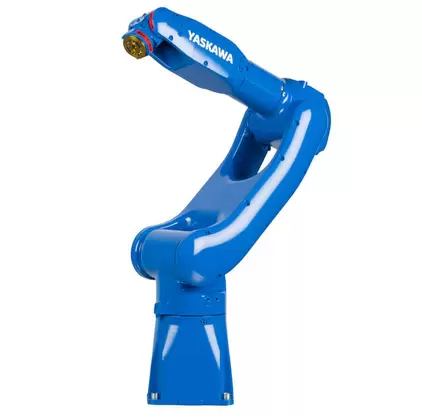Beamline phone numbers:
+44 (0) 1235 77 8617
+44 (0) 1235 77 8713
Principal Beamline Scientist:
Nick Terrill
Tel: +44 (0) 1235 778047
E-mail: [email protected]
Email: [email protected]
Tel: +44 (0)1235 56 7675
This project aims to develop a dedicated Bonse-Hart USAXS instrument for use on I22 and labSAXS. This drop-in instrument will allow current users who require lower q than the extreme 9.7 m camera can provide. This project originated between Brian Pauw, Wim Bras and Nick Terrill to investigate the possibility of producing a cost effective, portable USAXS end station for use on lab sources and synchrotron beamlines, including DUBBLE at the ESRF and I22 at Diamond. Its design is an evolution of two preceding proof-of-principle laboratory variants of the instrument.
The instrument consists of two towers with Si 220 channel-cut crystals on top. In between the two towers there is a platform for mounting a sample or sample stages. The two crystals can be rotated very carefully in the incoming X-ray beam, and undergo an alignment routine. As the instrument is designed to be in the synchrotron hutch, extensive motorisation is in place for remote control.
The downstream tower is designed to move between two positions: the normal SAXS/WAXS measurement position (i.e. with the downstream crystal tower out of the way) and the USAXS position. This configuration allows for the consistent illumination of the sample for both SAXS/WAXS and USAXS measurements.
The USAXS position will span a Q range from 0.002 to 0.1 nm-1, whereas the normal SAXS instrument will provide a bit of overlap and cover the remaining range to higher Q. The central stage is ~150 mm wide to allow a range of sample stages to be mounted, with a total vertical travel of 100 mm and a total horizontal travel of 100 mm.

The project aims at building a setup specifically designed for tomographic measurements at I22. The setup will involve two orthogonal motorised rotational stages and, in phase one, a manual goniometer assembled and aligned into the system allowing two-axes rotation of a sample and its positional adjustment into the beam. In phase two we would want to replace the manual goniometer with a motorised version to allow automated sample changing utilizing the Automation Robot. Motorising the goniometer will ultimately allow us to perform SAXS Tomography experiments in an automated mode as part of Phase II of the Automated Sample Delivery System project for I22.
The I22 SAXS/WAXS beamline took a partnership in the recently-awarded MRC Programme Grant to develop a dedicated mechanical testing facility.
As part of the grant, I22 will be working with their partners at Cardiff University to build a facility, which will allow biological tissue and other soft matter to be mechanically tested in a variety of ways, whilst being imaged using I22's SAXS and WAXS capabilities. The facility will be designed to be as versatile as possible, by providing a variety of motors, transducers and loading platens/arms/chambers, as well as the ability to swap in bespoke parts. Here are a few examples of experiments the facility will be capable of carrying out:
To maximise utility, I22 beamline and Cardiff University have set up a network of users with an interest in biomechanics/materials mechanics that can provide feedback about the desired capabilities of the facility.
Scientists and engineers of Diamond with a specific interest in described or similar areas of research are very welcome to join the network. Please, contact Olga Shebanova (I22, [email protected]).
In light of the recent COVID Pandemic and in response to a strong recommendation from the last International SAXS Review the I22 is undertaking a project aiming at an automated sample delivery system.
Five sample types have been identified for automated delivery: solids, liquids, gels (all in TSXAS mode), thin films (GISAXS mode) and tomography samples (TomoSAXS mode). Associated Software infrastructure is also being considered as part of the ongoing Synchweb improvements to which I22 is a participant. When completed, this will allow streamlining and automation of the reduction and analysis process to the point where the data from the beamline is stored in ISPyB directly after acquisition, reduced and analysed on our cluster computing facility by SasView and then displayed in SynchWeb in near real-time. When realised, the projects together will provide a full experimental cycle for users beginning with an automated data collection and completed by automated near real-time data reduction and analysis delivering parametric information about their samples – e.g. such as the size and polydispersity of particles in suspension.

Anyone who might have an interest should contact Olga Shebanova to discuss requirements
Diamond Light Source is the UK's national synchrotron science facility, located at the Harwell Science and Innovation Campus in Oxfordshire.
Copyright © 2022 Diamond Light Source
Diamond Light Source Ltd
Diamond House
Harwell Science & Innovation Campus
Didcot
Oxfordshire
OX11 0DE
Diamond Light Source® and the Diamond logo are registered trademarks of Diamond Light Source Ltd
Registered in England and Wales at Diamond House, Harwell Science and Innovation Campus, Didcot, Oxfordshire, OX11 0DE, United Kingdom. Company number: 4375679. VAT number: 287 461 957. Economic Operators Registration and Identification (EORI) number: GB287461957003.